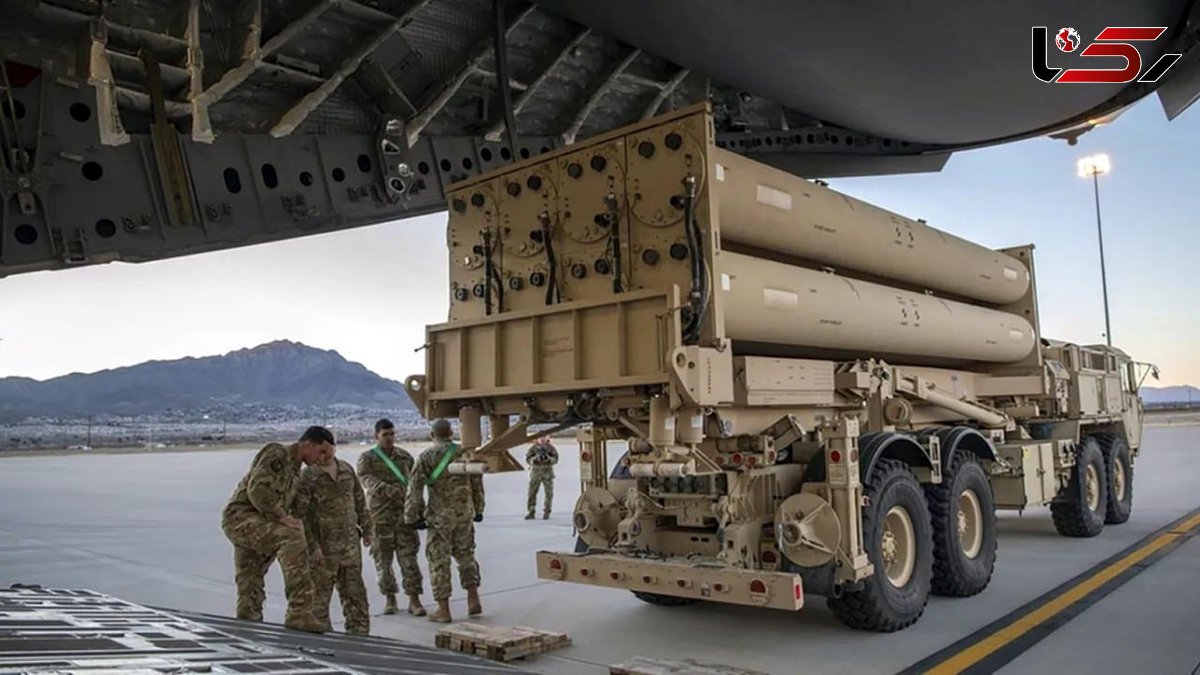How Did Iran Bring the U.S. Army’s THAAD Missiles to Their Knees? + Video
Rokna Political Desk – The Wall Street Journal, citing U.S. officials, reported that during the 12-day war between Iran and Israel, THAAD system operators fired more than 150 interceptor missiles.

According to Euronews, during the 12-day conflict between Iran and Israel, the United States, for the first time, deployed two advanced THAAD anti-missile systems simultaneously within the territory of a single country. This unprecedented move, carried out in support of Israel, failed to fully prevent Iranian missiles from penetrating, despite the extensive participation of Israel’s air defense systems.
The Wall Street Journal now reports, quoting American officials, that in the course of this war, THAAD system operators fired more than 150 interceptor missiles.
This figure is approximately equivalent to one-quarter of all interceptors the Pentagon has ever purchased.
The increasing demand for these interceptors reached a point where, at one stage, the U.S. Department of Defense examined whether it could transfer interceptors purchased by Saudi Arabia to Israel — a matter considered highly sensitive given the threat posed to Saudi Arabia’s oil and urban infrastructure.
However, the challenge was not limited to THAAD. U.S. destroyers in the Mediterranean and the Red Sea also expended a significant portion of their interceptor missiles, while Israel rapidly depleted its stockpiles of defensive missiles, including those of the Arrow and Iron Dome systems.
U.S. Systems and the Challenges of a “Missile World”
The Wall Street Journal notes that, while Israeli officials credited the U.S. systems with saving thousands of lives, the conflict clearly demonstrated that the United States is not fully prepared to counter large-scale missile attacks of the kind launched by Iran.
In recent decades, U.S. missile defense systems were designed primarily to counter targeted threats from Russia, China, or North Korea — not to withstand the massive volume of medium-range ballistic missiles used in this conflict.
This comes as many non-state actors or regional powers, such as the Houthis in Yemen, Russia in Ukraine, and even China in its Taiwan strategy, rely extensively on missile capabilities.
Tom Karako, director of the Missile Defense Project at the Center for Strategic and International Studies, stated:
“We are finally waking up to the fact that we must increase the procurement of defensive weapons on a large scale.”
THAAD: Advanced but Scarce Technology
The THAAD system, designed to intercept ballistic missiles at high altitudes, requires 100 U.S. troops for round-the-clock operation and has the capacity to hold 48 missiles. Each THAAD interceptor costs around $13 million, and only 650 have been produced to date.
Currently, the U.S. Army has only seven operational THAAD systems: two deployed in Israel, two in Guam and South Korea, one in Saudi Arabia, and two stationed within the United States.
Another system has yet to become fully operational. This deployment pattern has prevented the U.S. Army from routinely rotating systems out of service for maintenance and training, which, according to army officers, reduces overall readiness.
During the war, the Pentagon sent fresh missiles to the region, yet the shortage remained severe. It is estimated that replenishing the stockpiles expended in this war will take more than a year and cost between $1.5 and $2 billion.
Destroyers and the “Fog of War” Identification Crisis
In addition to THAAD, the U.S. Navy faced similar difficulties. Arleigh Burke-class destroyers in the Mediterranean and Red Sea fired about 80 SM-3 missiles to intercept Iranian threats. These missiles cost between $8 million and $25 million each.
However, the Pentagon is now closely reviewing the performance of these missiles, as some failed to completely destroy their intended targets.
In an environment saturated with fire and missiles, distinguishing between real warheads, debris, boosters, and decoys proved challenging for Navy personnel, and in some cases, multiple missiles may have been launched simultaneously to intercept a single target.
If Iran Strikes Again, the U.S. Will Not Be Ready
Another challenge was the inability to reload missiles at sea. Due to the weight and large size of missile canisters, reloading is impossible in unstable maritime conditions — an issue that could become a critical logistical bottleneck in a potential war with China.
U.S. officials warn that, should Iran once again launch large-scale missile attacks, the United States will not have sufficient readiness for an effective response.
One official stated:
“Our concern is that the Iranians may repeat this scenario. And we will no longer have the ability to repeat this response.”
Send Comments